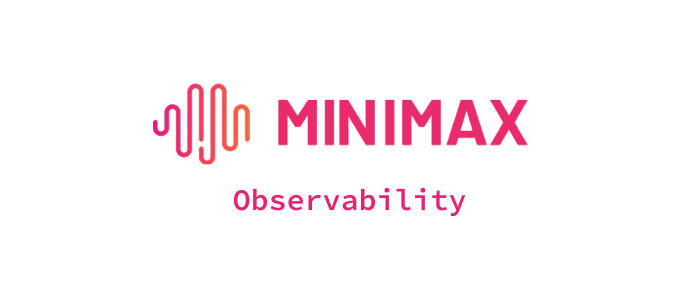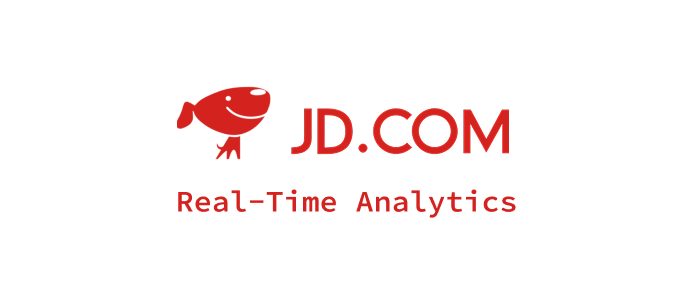What is LLM Observability?
LLM Observability is the comprehensive practice of monitoring, tracking, and analyzing the behavior, performance, and outputs of Large Language Models (LLMs) throughout their entire lifecycle from development to production. It provides real-time visibility into every layer of LLM-based systems, enabling organizations to understand not just what is happening with their AI models, but why specific behaviors occur, ensuring reliable, safe, and cost-effective AI operations.
Why Do We Need LLM Observability?
Black Box Problem
LLMs operate as complex neural networks with billions of parameters, making their decision-making processes opaque. Observability provides insights into model behavior, helping understand how inputs transform into outputs and identifying potential issues.
Production Reliability Challenges
AI applications in production face unique challenges including hallucinations, inconsistent outputs, latency issues, and cost overruns. Observability enables real-time detection and resolution of these problems before they impact users.
Regulatory and Compliance Requirements
Organizations need to demonstrate AI system reliability, fairness, and safety for regulatory compliance. Observability provides the necessary documentation and audit trails for AI governance and responsible deployment.
Cost Optimization Needs
LLM operations can be expensive due to computational requirements and API costs. Observability helps optimize resource allocation, track token usage, and identify cost reduction opportunities without sacrificing quality.
LLM Observability Architecture
Data Collection Layer
Comprehensive data gathering from multiple sources including model inputs/outputs, system metrics, user interactions, and environmental context across the entire AI application stack.
Request Tracing: Capture complete request lifecycle including parameters, prompts, responses, and metadata for full transaction visibility.
System Metrics: Monitor computational resources, memory usage, GPU utilization, and infrastructure performance for operational insights.
Business Context: Track user sessions, application flows, and business logic execution to understand AI system impact on organizational objectives.
Analysis and Processing Engine
Real-time processing of collected data to generate insights, detect anomalies, and trigger alerts based on configurable thresholds and machine learning-based analysis.
Visualization and Alerting Interface
Dashboards, alerts, and reporting systems that present observability data in actionable formats for different stakeholders including developers, operations teams, and business users.
Key Features of LLM Observability
Comprehensive Request Tracing and Lifecycle Monitoring
LLM observability provides end-to-end tracing of every request from input prompt to final output, capturing the complete transaction lifecycle including preprocessing, model inference, postprocessing, and response delivery. This includes tracking prompt engineering transformations, context injection, token consumption, processing latency, and response quality metrics. Advanced tracing capabilities enable organizations to understand exactly how inputs are transformed through the model pipeline and identify bottlenecks or failures at any stage.
Real-Time Performance and Cost Analytics
Continuous monitoring of critical performance indicators including response latency, throughput, token usage patterns, and associated costs provides immediate visibility into system efficiency. Cost analytics track per-request expenses, cumulative spending across models, and resource utilization trends, enabling proactive budget management and cost optimization. Performance metrics include GPU utilization, memory consumption, queue depths, and concurrent request handling to ensure optimal resource allocation.
Quality Assessment and Output Validation
Automated quality evaluation systems assess LLM outputs for coherence, relevance, factual accuracy, and alignment with expected behaviors. This includes hallucination detection through fact-checking mechanisms, consistency scoring across multiple responses, semantic similarity analysis, and custom quality metrics tailored to specific use cases. Quality scores are tracked over time to identify model degradation or improvements and ensure consistent output standards.
Safety and Security Monitoring
Comprehensive security monitoring detects potential threats including prompt injection attempts, adversarial inputs, data leakage risks, and inappropriate content generation. Safety features monitor for bias detection, harmful output prevention, privacy compliance, and adherence to ethical AI guidelines. Alert systems trigger immediate notifications when security thresholds are exceeded or suspicious patterns are detected.
Multi-Model and Pipeline Observability
Advanced observability systems track complex AI workflows involving multiple models, agents, and processing steps including RAG (Retrieval-Augmented Generation) pipelines, agent-based systems, and multi-step reasoning chains. This provides visibility into inter-model dependencies, data flow between components, and performance optimization opportunities across the entire AI application stack.
User Experience and Feedback Integration
Integration of user feedback mechanisms, satisfaction scoring, and behavioral analytics provides insights into real-world model performance and user experience quality. This includes tracking user interactions, session analytics, A/B testing results, and continuous learning feedback loops that inform model improvements and deployment decisions.
Automated Alerting and Anomaly Detection
Intelligent alerting systems use machine learning-based anomaly detection to identify unusual patterns in model behavior, performance degradation, cost spikes, or quality issues. Configurable alert thresholds and escalation procedures ensure rapid response to critical issues while minimizing false positives through contextual analysis and trend-based detection.
Common Use Cases for LLM Observability
Production Model Monitoring
Monitor deployed LLMs for performance degradation, output quality changes, and system reliability to ensure consistent user experiences and business value delivery.
RAG System Optimization
Track retrieval accuracy, context relevance, generation quality, and end-to-end latency in Retrieval-Augmented Generation systems for improved knowledge-based AI applications.
Cost and Resource Management
Monitor token consumption, API usage patterns, computational costs, and resource utilization to optimize infrastructure spending and operational efficiency.
Safety and Security Monitoring
Detect hallucinations, biased outputs, prompt injection attempts, and security vulnerabilities to maintain safe and trustworthy AI system operations.
Multi-Model Pipeline Analysis
Observe complex AI workflows involving multiple models, agents, and processing steps to optimize performance and identify bottlenecks in sophisticated AI applications.
Implementation Examples
Basic LLM Observability with OpenTelemetry
from opentelemetry import trace, metrics
from opentelemetry.exporter.jaeger.thrift import JaegerExporter
from opentelemetry.sdk.trace import TracerProvider
from opentelemetry.sdk.trace.export import BatchSpanProcessor
import openai
import time
import json
class LLMObservability:
def __init__(self):
# Initialize OpenTelemetry
trace.set_tracer_provider(TracerProvider())
tracer = trace.get_tracer(__name__)
# Configure Jaeger exporter
jaeger_exporter = JaegerExporter(
agent_host_name="localhost",
agent_port=6831,
)
span_processor = BatchSpanProcessor(jaeger_exporter)
trace.get_tracer_provider().add_span_processor(span_processor)
self.tracer = tracer
def track_llm_request(self, model, prompt, **kwargs):
"""Track LLM request with comprehensive observability"""
with self.tracer.start_as_current_span("llm_request") as span:
start_time = time.time()
# Add request attributes
span.set_attribute("llm.model", model)
span.set_attribute("llm.prompt_length", len(prompt))
span.set_attribute("llm.temperature", kwargs.get('temperature', 0))
span.set_attribute("llm.max_tokens", kwargs.get('max_tokens', 100))
try:
# Make LLM request
response = openai.Completion.create(
model=model,
prompt=prompt,
**kwargs
)
# Track response metrics
end_time = time.time()
latency = end_time - start_time
span.set_attribute("llm.response_length", len(response.choices[0].text))
span.set_attribute("llm.tokens_used", response.usage.total_tokens)
span.set_attribute("llm.latency", latency)
span.set_attribute("llm.status", "success")
# Log detailed metrics
self._log_metrics({
"model": model,
"latency": latency,
"tokens": response.usage.total_tokens,
"cost": self._calculate_cost(response.usage.total_tokens, model),
"prompt_length": len(prompt),
"response_length": len(response.choices[0].text)
})
return response
except Exception as e:
span.set_attribute("llm.status", "error")
span.set_attribute("llm.error", str(e))
span.record_exception(e)
raise
def _calculate_cost(self, tokens, model):
"""Calculate approximate cost based on token usage"""
cost_per_token = {
"gpt-3.5-turbo": 0.0000015,
"gpt-4": 0.00003,
"text-davinci-003": 0.00002
}
return tokens * cost_per_token.get(model, 0.00001)
def _log_metrics(self, metrics):
"""Log metrics for further analysis"""
print(f"LLM Metrics: {json.dumps(metrics, indent=2)}")
# Usage example
observability = LLMObservability()
response = observability.track_llm_request(
model="gpt-3.5-turbo",
prompt="Explain quantum computing in simple terms",
temperature=0.7,
max_tokens=200
)
Advanced LLM Observability with Langfuse
from langfuse import Langfuse
from langfuse.decorators import observe, langfuse_context
import openai
import json
from datetime import datetime
class AdvancedLLMObservability:
def __init__(self, langfuse_secret_key, langfuse_public_key):
self.langfuse = Langfuse(
secret_key=langfuse_secret_key,
public_key=langfuse_public_key,
host="https://cloud.langfuse.com"
)
@observe()
def generate_with_context(self, user_id, session_id, prompt, model="gpt-3.5-turbo"):
"""Generate response with full observability context"""
# Update context with user and session information
langfuse_context.update_current_observation(
user_id=user_id,
session_id=session_id,
metadata={
"environment": "production",
"model_version": "v1.0",
"timestamp": datetime.now().isoformat()
}
)
try:
# Make LLM call
response = openai.ChatCompletion.create(
model=model,
messages=[{"role": "user", "content": prompt}],
temperature=0.7
)
# Log the generation
generation = self.langfuse.generation(
name="chat_completion",
model=model,
input=prompt,
output=response.choices[0].message.content,
usage={
"promptTokens": response.usage.prompt_tokens,
"completionTokens": response.usage.completion_tokens,
"totalTokens": response.usage.total_tokens
},
metadata={
"temperature": 0.7,
"finish_reason": response.choices[0].finish_reason
}
)
return response.choices[0].message.content
except Exception as e:
# Log error
langfuse_context.update_current_observation(
level="ERROR",
status_message=str(e)
)
raise
@observe()
def rag_pipeline(self, query, user_id):
"""Observe complete RAG pipeline"""
# Step 1: Retrieve documents
retrieved_docs = self._retrieve_documents(query)
# Step 2: Generate response
context = "\n".join([doc['content'] for doc in retrieved_docs])
prompt = f"Context: {context}\n\nQuestion: {query}\nAnswer:"
response = self.generate_with_context(
user_id=user_id,
session_id=f"rag_{int(datetime.now().timestamp())}",
prompt=prompt
)
# Log retrieval quality metrics
self.langfuse.score(
name="retrieval_relevance",
value=self._calculate_retrieval_relevance(query, retrieved_docs),
comment="Automated relevance scoring"
)
return response
def _retrieve_documents(self, query):
"""Simulate document retrieval with observability"""
with self.langfuse.trace(name="document_retrieval") as trace:
# Simulate retrieval
docs = [
{"id": "doc1", "content": "Relevant document content 1", "score": 0.95},
{"id": "doc2", "content": "Relevant document content 2", "score": 0.88}
]
trace.update(
input=query,
output=docs,
metadata={"num_retrieved": len(docs)}
)
return docs
def _calculate_retrieval_relevance(self, query, docs):
"""Calculate retrieval relevance score"""
# Simplified relevance calculation
return sum(doc['score'] for doc in docs) / len(docs)
def track_user_feedback(self, trace_id, feedback_score, feedback_text):
"""Track user feedback for continuous improvement"""
self.langfuse.score(
trace_id=trace_id,
name="user_feedback",
value=feedback_score,
comment=feedback_text,
data_type="NUMERIC"
)
# Usage example
observability = AdvancedLLMObservability(
langfuse_secret_key="your-secret-key",
langfuse_public_key="your-public-key"
)
# Generate with observability
response = observability.generate_with_context(
user_id="user123",
session_id="session456",
prompt="What are the benefits of renewable energy?"
)
# RAG pipeline with observability
rag_response = observability.rag_pipeline(
query="How does solar energy work?",
user_id="user123"
)
Custom Metrics Dashboard for LLM Monitoring
import asyncio
import aiohttp
from dataclasses import dataclass
from typing import List, Dict, Any
import time
from collections import defaultdict
import json
@dataclass
class LLMMetrics:
timestamp: float
model: str
latency: float
tokens_used: int
cost: float
quality_score: float
error_rate: float
user_satisfaction: float
class LLMMetricsCollector:
def __init__(self):
self.metrics_buffer = []
self.aggregated_metrics = defaultdict(list)
self.alerts = []
def record_request(self, metrics: LLMMetrics):
"""Record individual request metrics"""
self.metrics_buffer.append(metrics)
# Check for alerts
self._check_alerts(metrics)
# Aggregate metrics periodically
if len(self.metrics_buffer) >= 100:
self._aggregate_metrics()
def _check_alerts(self, metrics: LLMMetrics):
"""Check for anomalies and trigger alerts"""
alerts = []
# High latency alert
if metrics.latency > 5.0:
alerts.append({
"type": "high_latency",
"message": f"High latency detected: {metrics.latency:.2f}s",
"severity": "warning",
"model": metrics.model
})
# Low quality alert
if metrics.quality_score < 0.7:
alerts.append({
"type": "low_quality",
"message": f"Low quality score: {metrics.quality_score:.2f}",
"severity": "critical",
"model": metrics.model
})
# High cost alert
if metrics.cost > 1.0:
alerts.append({
"type": "high_cost",
"message": f"High cost per request: ${metrics.cost:.4f}",
"severity": "warning",
"model": metrics.model
})
self.alerts.extend(alerts)
def _aggregate_metrics(self):
"""Aggregate metrics for dashboard display"""
if not self.metrics_buffer:
return
# Group by model
by_model = defaultdict(list)
for metric in self.metrics_buffer:
by_model[metric.model].append(metric)
# Calculate aggregations
for model, metrics in by_model.items():
self.aggregated_metrics[model] = {
"avg_latency": sum(m.latency for m in metrics) / len(metrics),
"total_tokens": sum(m.tokens_used for m in metrics),
"total_cost": sum(m.cost for m in metrics),
"avg_quality": sum(m.quality_score for m in metrics) / len(metrics),
"error_rate": sum(1 for m in metrics if m.error_rate > 0) / len(metrics),
"request_count": len(metrics),
"timestamp": time.time()
}
# Clear buffer
self.metrics_buffer = []
def get_dashboard_data(self):
"""Get formatted data for dashboard"""
return {
"models": dict(self.aggregated_metrics),
"alerts": self.alerts[-10:], # Last 10 alerts
"summary": self._generate_summary()
}
def _generate_summary(self):
"""Generate overall system summary"""
if not self.aggregated_metrics:
return {}
all_metrics = list(self.aggregated_metrics.values())
return {
"total_models": len(self.aggregated_metrics),
"avg_latency": sum(m["avg_latency"] for m in all_metrics) / len(all_metrics),
"total_requests": sum(m["request_count"] for m in all_metrics),
"total_cost": sum(m["total_cost"] for m in all_metrics),
"active_alerts": len([a for a in self.alerts[-10:] if a["severity"] == "critical"])
}
# Example monitoring system integration
class ProductionLLMMonitor:
def __init__(self):
self.metrics_collector = LLMMetricsCollector()
self.quality_evaluator = QualityEvaluator()
async def monitor_llm_request(self, model, prompt, response, start_time, end_time):
"""Monitor a single LLM request"""
latency = end_time - start_time
tokens_used = len(prompt.split()) + len(response.split()) # Simplified
cost = self._calculate_cost(tokens_used, model)
quality_score = await self.quality_evaluator.evaluate(prompt, response)
metrics = LLMMetrics(
timestamp=time.time(),
model=model,
latency=latency,
tokens_used=tokens_used,
cost=cost,
quality_score=quality_score,
error_rate=0, # Set based on actual error detection
user_satisfaction=0.8 # Would come from user feedback
)
self.metrics_collector.record_request(metrics)
def _calculate_cost(self, tokens, model):
"""Calculate cost based on model pricing"""
pricing = {
"gpt-3.5-turbo": 0.0015,
"gpt-4": 0.03,
"claude-3": 0.008
}
return tokens * pricing.get(model, 0.001) / 1000
class QualityEvaluator:
async def evaluate(self, prompt, response):
"""Evaluate response quality using multiple metrics"""
# Implement quality evaluation logic
# This could include coherence, relevance, factuality checks
return 0.85 # Placeholder score
# Usage in production
monitor = ProductionLLMMonitor()
# Example request monitoring
await monitor.monitor_llm_request(
model="gpt-3.5-turbo",
prompt="Explain machine learning",
response="Machine learning is a subset of AI...",
start_time=time.time() - 2,
end_time=time.time()
)
# Get dashboard data
dashboard_data = monitor.metrics_collector.get_dashboard_data()
print(json.dumps(dashboard_data, indent=2))
Key Takeaways
LLM Observability is essential for building reliable, safe, and cost-effective AI systems in production environments. By providing comprehensive visibility into model behavior, performance, and outputs, organizations can proactively identify issues, optimize resources, and ensure consistent user experiences. The combination of real-time monitoring, automated alerting, and detailed analytics enables teams to maintain high-quality AI applications while meeting compliance and governance requirements. As LLM applications become more complex with multi-agent systems and RAG pipelines, robust observability becomes critical for understanding system behavior and maintaining operational excellence.
Frequently Asked Questions
Q: How does LLM observability differ from traditional application monitoring?
A: LLM observability focuses on AI-specific metrics like output quality, token usage, hallucinations, and model behavior, while traditional monitoring tracks system performance. LLM observability requires understanding of language model characteristics and AI-specific failure modes.
Q: What metrics are most important for LLM monitoring?
A: Critical metrics include latency, token usage, cost per request, output quality scores, error rates, user satisfaction, and safety metrics like hallucination detection. The specific metrics depend on your use case and business requirements.
Q: How can I detect hallucinations in LLM outputs?
A: Hallucination detection involves fact-checking against knowledge bases, consistency scoring across multiple responses, confidence estimation, and automated quality evaluation. Some tools use semantic similarity and external validation for detection.
Q: What tools are available for LLM observability?
A: Popular tools include Langfuse (open-source), Datadog LLM Observability, Arize Phoenix, Weights & Biases, and OpenTelemetry with custom instrumentation. The choice depends on your stack, budget, and specific requirements.
Q: How do I balance observability overhead with performance?
A: Use sampling for high-volume applications, implement asynchronous logging, batch metrics collection, and focus on critical metrics. Consider using lightweight observability SDKs and optimize data collection frequency based on your needs.
Learn More
Related Articles
- Error Analysis to Evaluate LLM Applications
- How we use LLMs to scale Langfuse
- Hugging Face and Langfuse: 5 Ways to use them Together
- LLM Evaluation 101: Best Practices, Challenges & Proven Techniques
- An Introduction to Observability for LLM-based applications using OpenTelemetry
- OpenTelemetry for Generative AI
Videos



